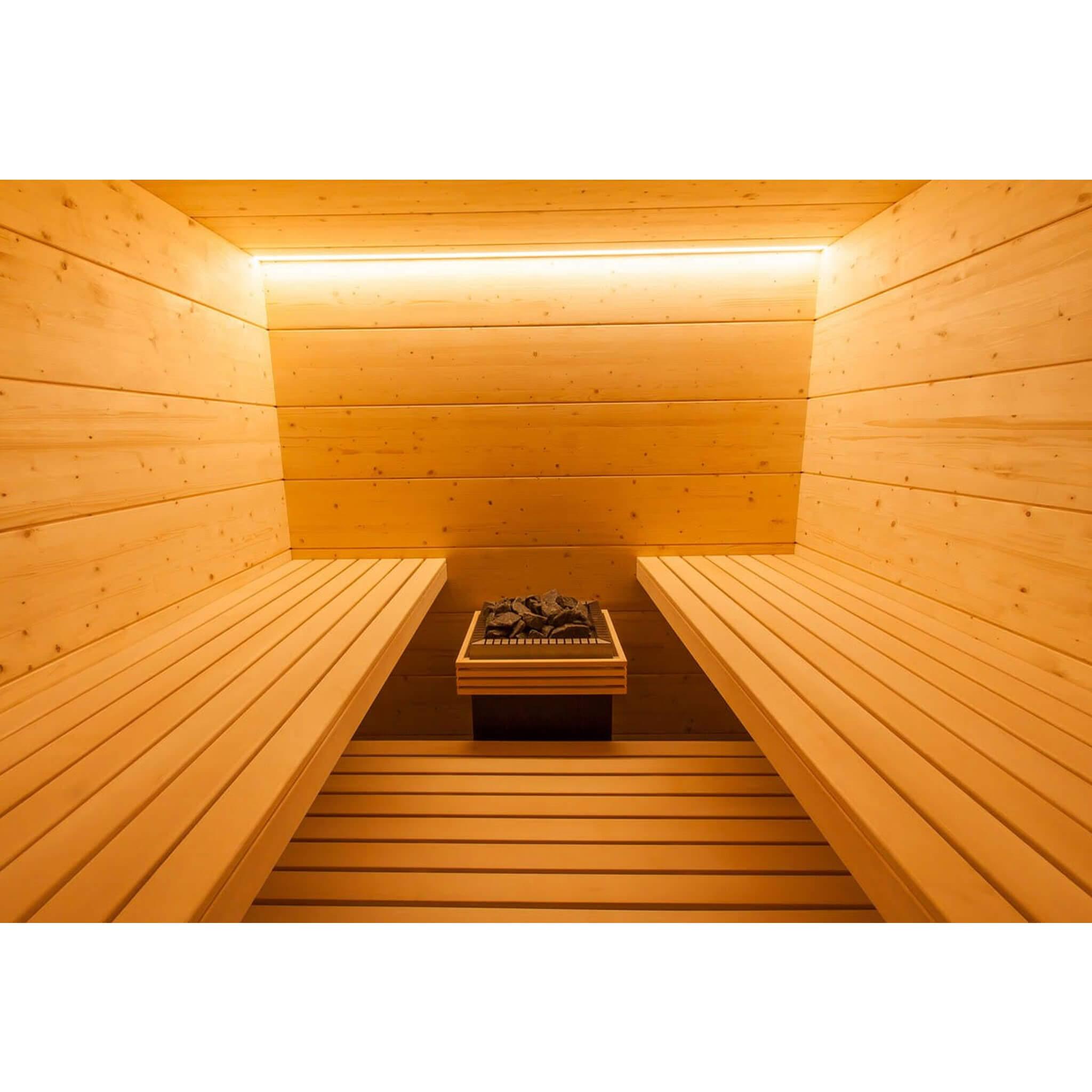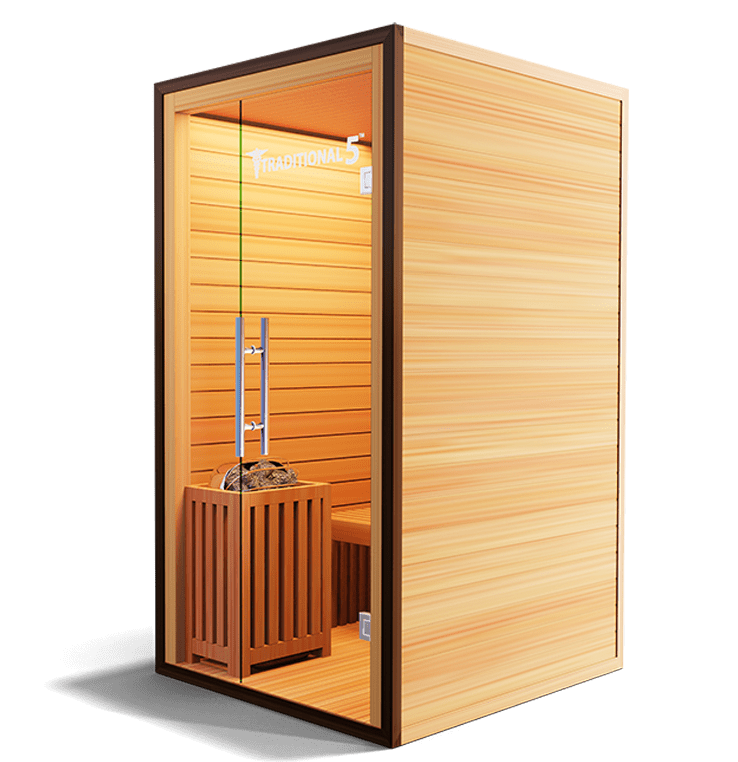An Unbiased View of Traditional Sauna
Wiki Article
Some Of Traditional Sauna
Table of ContentsTraditional Sauna Can Be Fun For AnyoneThe 4-Minute Rule for Traditional SaunaThe Of Traditional SaunaThe Traditional Sauna Diaries
The majority of the weight shed in a sauna is water loss and is re-gained upon rehydrating. Nevertheless, undoubtedly sauna can be a fundamental part of a healthy weight-loss program. To take a look at the differences between traditional and IR saunas, I will divide these right into verifiable, academic, and made differences.Thus, the hottest factor in the saunawhich goes to the ceiling directly above the sauna heateris usually between 185 and 190 F. Traditional Sauna. Claims that a conventional sauna exceeds 200 F is merely not real and not appropriate for electric saunas marketed in the United States. The temperature for a far-infrared sauna is normally set between 120 and 140 F; however, unlike the typical sauna, the goal in and IR room is not to achieve a heat
Due to this, the temperature distinction is nearly pointless, considering that profuse sweating leads to both sauna kinds, but the approach of heating up the body is different. In an IR sauna the bather will certainly feel warm and will sweat profusely, yet at much reduced temperature levels. Therefore, if the goal is to invest longer amount of times in the sauna, the IR sauna is a good selection.

Rumored Buzz on Traditional Sauna
When the high temperature is achieved, the components cycle on and off to keep the heat. Most typical sauna customers delight in putting water over the rocks to develop heavy steam to increase sauna humidity degrees. The benefits of putting water over the rocks consist of: making the room a lot more comfy, dampening the nasal flows, and allowing the use of aromatherapy by mixing necessary oils with the water.In a far-infrared sauna, the warmth waves penetrate the body to properly heat up the body and elevate the body core temperature. To accomplish this increased temperature, Far-infrared emitters create infrared energy which is close to the same wavelength as that which the body normally emitsoften described as the "Crucial Variety" of 7 to 14 microns), so the power is well gotten by the body.
When the power gets in the body, it triggers the body temperature level to enhance and ultimately results in sweating. In an infrared sauna it's important for the emitters/heaters to continue to be on virtually regularly. Because there is no mass of rocks to preserve warmth, the sauna will cool if the emitters turned off.
As pointed out above, the sauna bather in an infrared room wants to position himself before operating emitters to get optimal take advantage of the heat. The home heating time for both areas can be extremely different, relying on exactly how the rooms are made use of. For a traditional sauna, a bather must enable 30-40 mins for the space to achieve a wanted temperature level and to appropriately pre-heat the rocks.
All About Traditional Sauna
A well created sauna will normally achieve a temperature level of 150-160 F in about 30-40 mins. For hotter temperatures, the area might need to heat for a longer period.To some, 15 mins was "wasted" while the infrared power warmed the timber panels as opposed to heating a body, informative post while others discover a pre-heated area to be much more comfy and think a raised beginning temperature is necessary to start perspiring. The length of suggested use for each and every space is around the very same (10-15 mins per session); nonetheless, as a result of the reduced air temperature levels and the capacity to really feel the results of infrared warmth much faster than a traditional sauna, it is not uncommon for a person to invest a total amount of 20-30 mins in an infrared sauna.
Typical saunas often tend to be bigger (therefore make use of even more electricity) than infrared saunas, although traditional saunas are certainly available in one and two person sizes as well. For a two-person typical sauna, 5x6 or 5x7 dimension is most preferred. The leading bench can easily seat 2 or 3 people and is also enough time to rest throughout the sauna session.


The average cost per kWH of electrical energy in the U.S. is around $0.11, so a 4.5 kW heating unit will certainly directory set you back about $.50 to compete one hour, if the heating system runs constantly for one hour. Normally a sauna heating system will certainly run for 75% of the initial hour and 50% of subsequent hours on given that the elements cycle once the set temperature is accomplished.
The Ultimate Guide To Traditional Sauna
A two person far-infrared area is normally physically smaller sized than a typical sauna, usually concerning 4' x 4' or smaller. The IR furnace is commonly 1.5-1.7 kW utilizing a 120 volt 15 amp plug-in solution. Since the space can be utilized quicker than a sauna area, we will certainly think the area is made use of for to of an hour consisting of warm up time.There is a seldom discussed difference in the social experience between the two rooms. While our society has actually lost a few of the social benefit of the typical sauna experience, it can be extremely socially rewarding. From household time in the sauna, to heart-felt discussions with considerable others, to sauna partiesthe conventional sauna experience can view bring about intimate mingling.
A lot of higher end infrared areas consist of colored light treatment, noise systems and full-glass fronts.
Report this wiki page